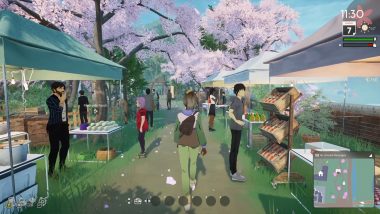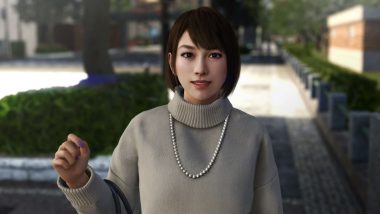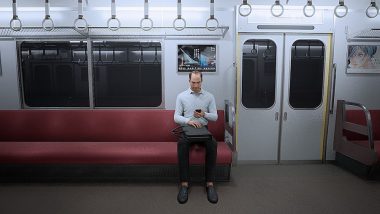Manifold Garden, the gravity-bending puzzle game, took 7 years to make [Developer interview]
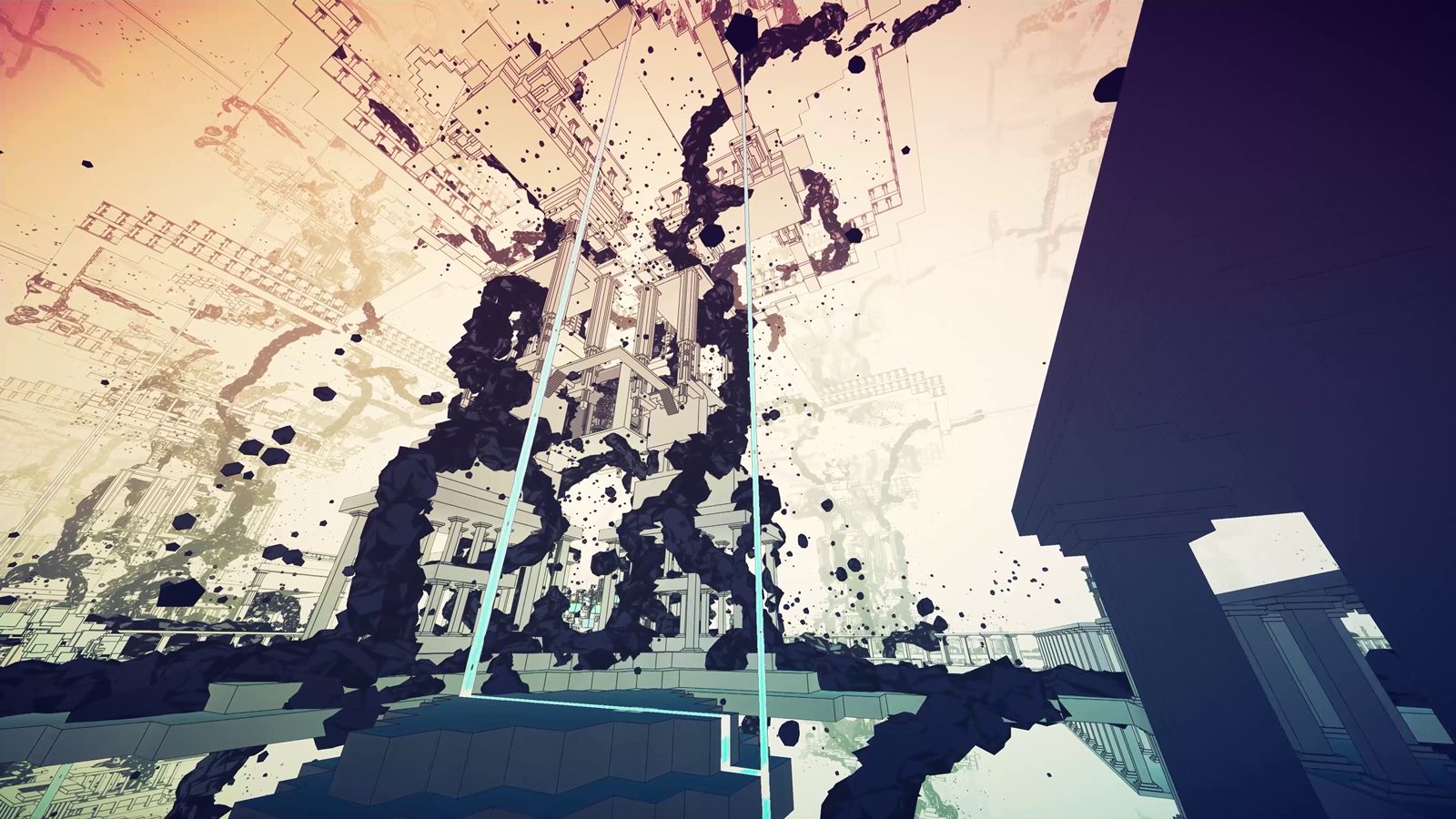
Publication date of the original Japanese article: 2021-03-25 18:18 (JST)
Translated by. Ari Clark
Manifold Garden is a first-person puzzle game famous for its infinitely-repeating, mysterious design that mesmerizes players at a single glance. The player must solve puzzles within a world that seems more like a work of art, structured around gravitational and spatial phenomena that could never exist in reality.
Massive structures with geometric designs float in a blank, white space. The same structures repeat infinitely in every direction, up and down, left and right, in a space where falling down just leads you back to where you started. As you make your way through these structures, you tackle simple yet brain-bending puzzles by pressing switches, carrying items to designated places, or even manipulating the flow of water to grow trees.
The developer of the game is William Chyr, originally known for his work as an installation artist. The game was released in 2019, after an extended development period that lasted for seven years. It received stellar reviews, with a Metacritic score of 85 for the PC version, and was nominated for several game awards in 2019.
This article brings you the full contents of our interview with the developer of Manifold Garden himself, William Chyr, in which we got the marvelous chance to ask him all about his game.
*Disclosure: The Japanese PS4/Nintendo Switch version of Manifold Garden is published by PLAYISM. PLAYISM is part of Active Gaming Media, which is also the owner of this website.

First of all, what made you start working on this project? Where did the initial idea come from?
William Chyr:
Right. This takes me back to 2012. I was actually an installation artist, a sculptor back then. I was making a lot of artwork with balloons for museums, art centers, science museums, places like that. The work was going well, but I was getting a bit frustrated with my work. I wanted to try another medium because I had become the “balloon guy.”
At the time I had watched Indie Game: The Movie. A friend of mine got the documentary and we watched it. He was really into independent video games, so he showed me Braid, FEZ, Journey, and I thought…I’d studied physics in school and had worked very briefly at an advertising agency. So I’ve done some programming and I’ve done some design. I had no experience making a game before, but I thought a game is just some art and design and programming. How hard can it be? Maybe I’ll spend a few months.
Originally, I wanted to make a really big multiplayer game in Chicago with time travel but that sounded quite challenging. So I wanted to make a small project to practice and learn Unity. I thought it would take me three months and that project became Manifold Garden. At the very beginning it was supposed to be a practice project that would only take three months, and it ended up taking about 7 years to release.

How many people were involved in the project, and how did it change over time?
William Chyr:
If you look at the credits of the game, you’ll see there’s something like 40-50 people involved and we didn’t always have that size from the beginning. For the first three years it was just me, I was doing everything. I didn’t really know people in the industry.
I’m based in Chicago and there are not a lot of developers here. There are a few, and I got to meet some of them at meet-ups and various events. So I think I started in 2012, and then in 2014, I went to GDC for the first time and I remember that was where I met a lot of people. I got connected to Indie Fund at one of these events and they were interested and provided some initial funding in 2015. And that was the year I started bringing in other people.
At that time we were two to three people, but the problem was I didn’t have a lot of money and I didn’t know how to work with others. People kind of came and went. They would work for two to three months and then leave. So three years of me working alone and two years of people coming in and out like a rotating door.
I think it was finally in around 2017 that I met Arthur. I was looking for a graphics programmer and Arthur Brussee reached out to me on Twitter. We talked and he joined the team. He is really kind of the first of the team that eventually shipped the game together. He had joined and then a lot of the other members as well. We found a sound designer, a composer, other programmers and producers. They all joined in 2018-2019.
I would say the core team that shipped the game at the end was about eight to nine people depending on how you counted. We also worked with a lot of contractors. I think the month before we shipped there were maybe 30 people involved between QA, press, marketing, the iOS mobile version and the PC version. Now, we are about a team of five.
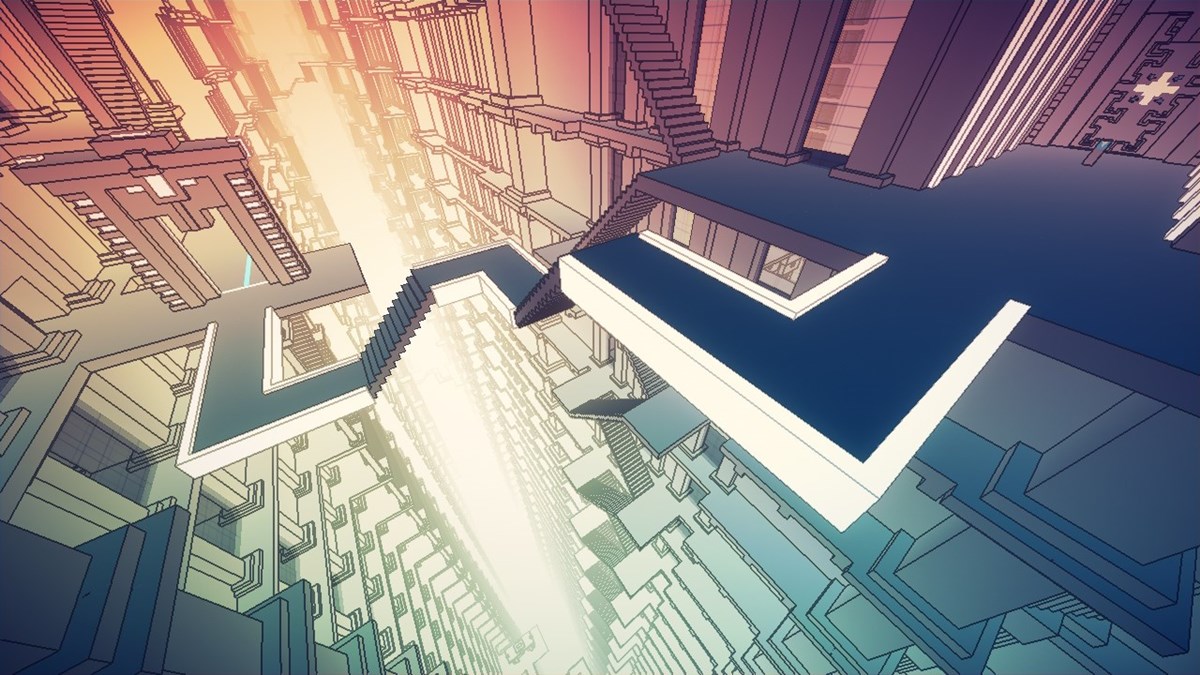
The fact that you were developing on your own for three years was kind of surprising. You said it was supposed to be a practice project at first, right? What kept you going for three years?
William Chyr:
I think a big part was that I kept telling myself I was two months away from shipping. I was 25 when I started and I was 32 years old when I finally shipped it. I think if you had told me when I was 25 it would take 7 years, I don’t think I would have started. I was a very different person back then, I didn’t have a lot of patience. But for the first three years I kept telling myself “just two more months and then it’s going to release.” So I kept giving myself these short deadlines that then extended. That was the large part about what kept me going, I thought I was almost about to release the game.
What made you decide you wanted help from others? What was the turning point for that?
William Chyr:
The turning point was I think in 2015. I started to realize that there were certain things that we wanted to re-do and it was getting to the point where I couldn’t do everything myself. I started working with people because I thought I needed help, but it wasn’t really until 2017 that I finally embraced the idea of working with other people. When I first started, I felt I needed to prove everything, I needed to do everything myself, but in 2017 especially working with Arthur, I realized that the game was so much better because of his input.
During the process of development, were there any memorable moments or something that had a really huge impact on the team or the game?
William Chyr:
Wow, so many. I think between 2014 and 2016 I went to thirty different conventions, festivals, and conferences. I was going to them about once a month. I went to GDC, I went to E3, I went to Tokyo Game Show. I had a great time there and at each of those, I met a lot of people. Then I would go back to Chicago where I live, and I would kind of take all the input, and then fix it and then go to the next event to test it. So with such a long development time, it’s so difficult to pick one moment.
There were a few. I think meeting Jonathan Blow at PSX in Las Vegas was pretty exciting. Braid was a big influence. I sent him a build of the game and he was quite a bit interested, and he gave me a lot of feedback. I think for a young designer who’s just entering the industry who hadn’t shipped a game before, to now have the designer of Braid kind of give feedback…that was a very formative experience.
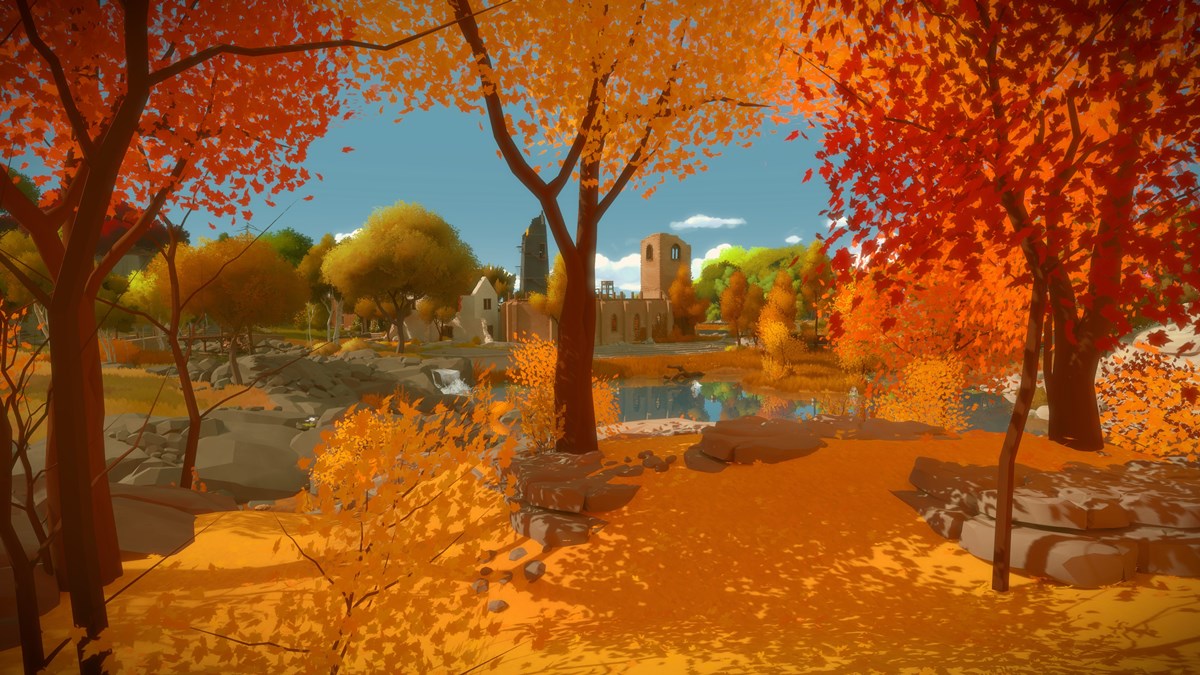
I imagine the game itself had changed a lot during the development process as well. I know the initial title was different, it was Relativity, right? How did the game change, how did it evolve during the development process, and why did you change the title?
William Chyr:
Everything about the game went through so much transformation and evolution during development. When I was first making the game, I had actually not played games for about 10 years. I played a lot when I was a child and in middle school, I had a Nintendo 64… but then when I was 14 I kind of stopped playing video games and I didn’t start playing again until I wanted to make one.
One of the first games I played back in 2012 was Portal. So the game initially was very much modeled after Portal. I thought, let me come up with a mechanic and then I’ll make 10 levels and then I’ll have one big level at the end. Very straightforward.
I had studied physics and M.C. Escher’s work is in math textbooks all the time. And I’d also seen the movie Inception, which had a lot of M.C. Escher inspiration. There’s a scene where they fold Paris in half and start walking up the wall. And I thought, that can be my core mechanic. So the initial game was to make the M.C. Escher print called Relativity a game. It was an adaptation of that work. It didn’t have the emphasis on architecture, it didn’t have the infinite world, it didn’t have the garden. It was just changing perspective, changing gravity. So that’s why it was called Relativity.
But over time we kept iterating, we kept adding new mechanics, we kept exploring. Everything in the game, the mechanic, the art style…I’ve gone through so many iterations. It just felt like, “This is the 100th version of the same thing, why am I using the first name that I came up with?” So we took some time to think about it and that was a hard decision because we had already done PSX and Tokyo Game Show with Relativity.
But over time it just felt like that name didn’t capture what the game was about. Relativity was more about the mechanics. It would be like calling the game Gravity Changer. But I felt Manifold Garden really encompassed much more of what the game became. Manifold means “many,” there’s the garden aspect, there are many dimensions…so I think it was just a much more fitting title. And of course, there is the mathematical definition, a three manifold. In the game it’s a three-torus…it’d be a little hard to describe this with words, but it repeats in every single direction, and manifold is also the mathematical term for that.
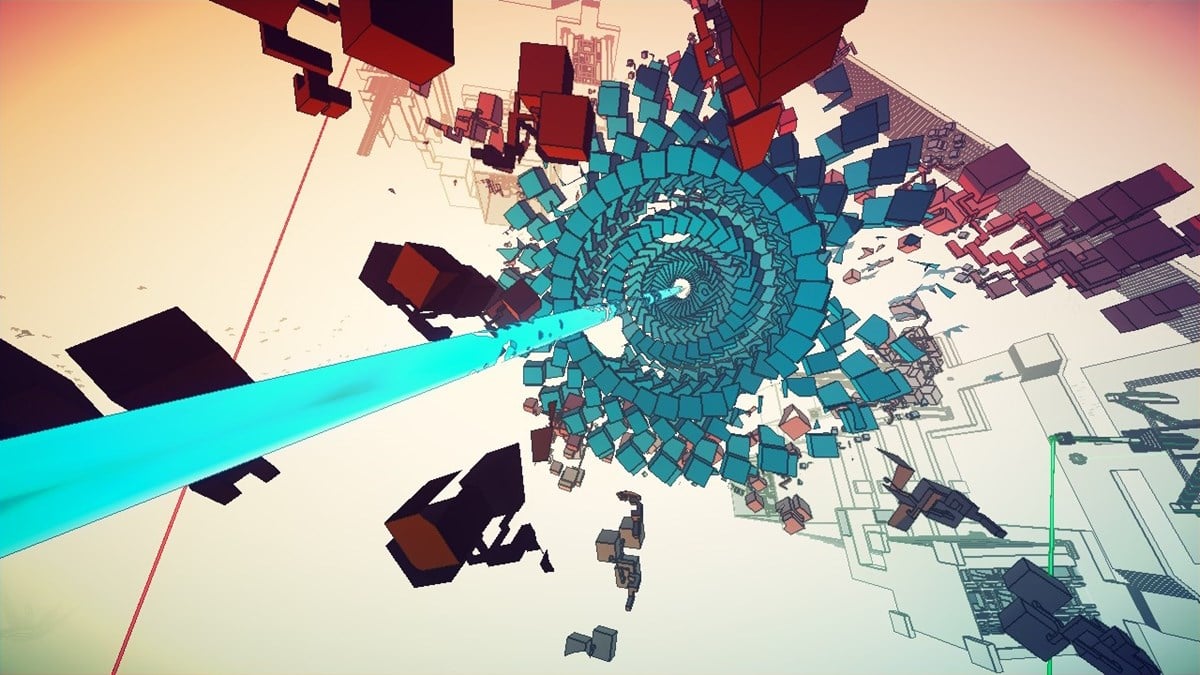
What about the puzzle mechanics? Like the motifs, the trees, the garden cubes, and all of that. What were they inspired by?
William Chyr:
There is a game called Starseed Pilgrim by a game designer called Droqen. That was a big inspiration for Manifold Garden. In fact, Droqen actually joined in 2019 and helped us with the design of the ending. Initially, we had these cubes that you could put on switches to open doors. That’s a very basic puzzle mechanic, you see it in a lot of games. We started placing trees in the levels as a signpost because when players see a tree they go towards there. The trees and the cubes weren’t connected.
But eventually, I realized if you wanted to drop a cube it was just like a dispenser, like in Portal you know. You press a button, it gives you a cube. And then, I started having this idea to combine the trees and the cubes together. And then at one of the events, someone suggested, “Hey, why don’t you just have the cube be a seed that you can grow a tree and say, you can take it off.” That was sort of when it all came together. It was a bunch of different pieces coming together slowly over time.
I see, thank you. Manifold Garden has a lot of aspects, not just the architecture. The graphics, the level design, the sound design. Which parts were your work and which were other team members’?
William Chyr:
Right, so I basically did all of the level design. In terms of the art style, my two favorite architects are Frank Lloyd Wright and Tadao Ando. So we drew a lot of inspiration from them. We tried to sort of combine the brutalism, the kind of larger scale of Ando’s work, and then a lot of the intricate details of Frank Lloyd Wright.
Because the game doesn’t have textures and it doesn’t have human objects, we had to have the details to provide the sense of scale. So I established the art style, and then I designed the levels and the puzzles. Over time, I did less of the graphics programming, and a lot of gameplay programming we had other people do.
I did not do any of the sound design or the music. Those were Martin Kvale and Laryssa Okada respectively. I think towards the end I became much more assertive directing the game and then focusing on the level design.
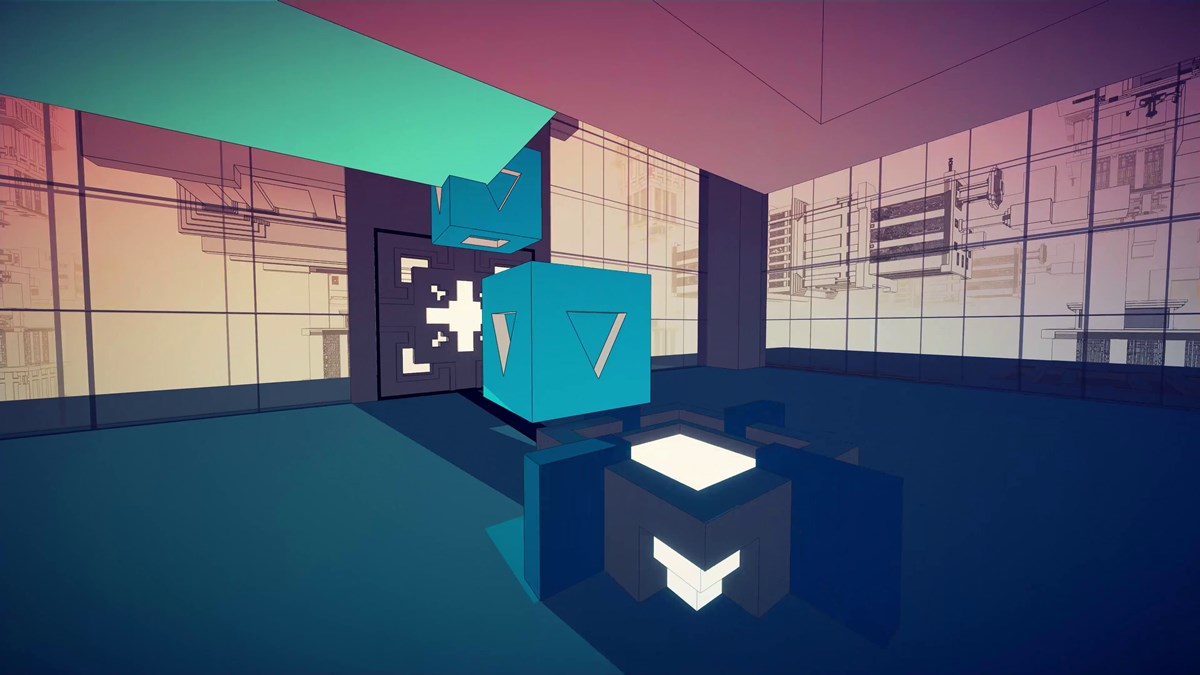
The game was released as an Epic Games Store and Apple Arcade exclusive at first. What was the decision behind that?
William Chyr:
We wanted to have stability for the studio. It’s a very volatile industry as we all know. You don’t know how the game is going to do. By that point, I’d been working on the game for 7 years and we didn’t have a lot of funding. My priority at that point was to ensure that we had stability, that we can continue to work on the game, and that we can pay back investors, and pay back the people who worked on the game. So that was the primary motivation for us.
How did the release go? Did you feel any differences between the platforms?
William Chyr:
Yeah, each platform has its own unique character. Certainly, Apple Arcade has its own unique qualities because it’s a subscription model. It might be the most challenging from a technical standpoint as well. The saves have to transfer between multiple devices, players can use touch, they can use keyboard and mouse, they can use a controller.
For your original question, I’ve been super happy with the launch. We have got just incredible play reviews, we got strong Metacritic, we were nominated for a BAFTA debut award, the GDC Awards, and most importantly for us, on Steam we have 97% positive user reviews. At least as of this morning. We have about 1,500 reviews and it’s overwhelmingly positive. So we’re really thrilled that players and critics have enjoyed the game.
And for us as a studio, we have stability. We’ve been able to continue working on the game to keep improving it, to work on fixes, and think about future titles, so I’m thrilled. In terms of my own day-to-day life, it’s very different because I used to be doing a lot of level design and nowadays it’s a lot of meetings and a lot of spreadsheets. But I think the biggest change for me is, back then I was making a game and now I’m making a studio.
Any feedback from players that was really memorable?
William Chyr:
Yeah, there are so many. We’re always happy to hear players say positive things, and we’ve got so many kind words and emails and messages saying how the game emotionally impacted them. That is always just really wonderful for us to hear.
It’s also really interesting for me as a designer. I actually go on Twitch and I watch players stream the game. And then, of course, there are some puzzles I want to go back and change…but I’m not doing that. I think the big thing for me is coming to terms with the game that we shipped. There are imperfections, there are flaws but I think they ultimately contribute to making the game what it is. It wouldn’t quite be the same if every part of the game was exactly perfect like I wanted. I think some of the imperfections actually make the game more interesting. It’s definitely a learning experience as a designer to just see players solve puzzles.
During development, we did a lot of playtesting. I think we did about 2,000 hours of playtesting and QA, so we saw a lot of different ways of players trying to solve the puzzles. But even after we shipped, players were finding out new ways to beat the game, new ways to solve puzzles.
I think the most exciting thing for me was watching a speedrunner play the game at AGDQ, Awesome Games Done Quick. Manifold Garden was there…and I think he did it in 10 minutes. I just couldn’t believe what he was doing with my game. I thought I knew it so well, and he was someone who knew it even better than I did.
Have you ever contacted or spoken with anyone in the speedrun community?
William Chyr:
Yeah, we have a Discord channel, so they do talk to us. They discover bugs, we don’t necessarily want to fix it. Because most people are not using it that way. We try to let them do their own thing and not interfere. I remember when a speedrunner was streaming, we donated and we gave a shout-out.
I also did a developer response. I made a video of me watching his speedrun and just sort of talking about it from a development standpoint. Like, “this is why that is possible,” “this is why we tried to do this,” “here’s a secret that he discovered that we didn’t think anyone would get to know.”
I wanted to talk about the music as well. I normally do not wear headphones when I’m playing games, but for Manifold Garden, I felt like I had to because it was just something that was establishing the atmosphere of the game very well.
William Chyr:
Sound effects were done by Martin Kvale and the music was composed by Laryssa Okada. I started to work with Martin first. Initially I had a difficult time working with Martin because I was so used to working by myself, and I wasn’t good at communicating. I remember Martin would come to me and I was frustrated because it wasn’t what I had in mind. But of course not, he’s not a mind-reader. And then over time, I learned how to work with other people by working with Martin. Towards the end, I had to learn to trust him to make the decisions.
For example, when you are carrying a cube upstairs and the cube knocks against the stairs, it makes this really interesting sound. That was all Martin’s idea. Initially, I didn’t like it. But then, that has become a very popular thing with players. In fact, when the speedrunner on AGDQ was streaming, he said, “Hey everybody, pay attention to this great sound effect.” He liked it so much he told everyone to check it out.
I think the interesting thing about designing for a game like Manifold Garden is that it’s not realistic. So what do you do? Is the material concrete? Is it wood? We had a lot of freedom, but it also brought its own challenges. Over time we wanted to make it feel like you’re playing a musical instrument. It’s playful, it’s interesting. When you land on glass it actually is a musical note. When you walk on glass you actually hear different notes when you land. Like a chord.
For the music, I actually did not know Laryssa’s work before. I posted on Twitter that I was looking for a musician and I think I got about 300 responses. I listened to everybody’s portfolio. I didn’t know who Laryssa was, but her music really stood out to me. Her music has a lot of emotion and that’s actually one of the problems that we had with Manifold Garden, it was very cold. Somebody said to me, “Too much manifold, not enough garden.” I thought it perfectly captured the game’s state at that moment. A lot of architecture, a lot of cool set pieces, but it didn’t make you feel anything.
So we wanted Laryssa to compensate for that. Initially, I thought, maybe 40 minutes of music will do, I don’t want a lot of it. But as soon as we heard the first track, it was clear. “We want music everywhere. This stuff is really great.” I think we actually ended up with close to four hours of music in total.
Let me ask about the future. Are you going to add anything to Manifold Garden? Any plans to update the game, or possibly do a sequel?
William Chyr:
We are going to continue fixing bugs. I don’t know about a sequel because like I said, I started in 2012 and it’s 2021 now. It’s been almost 10 years on this one game, so I think I might be open to doing something else now. But we will definitely continue to support Manifold Garden. We have a team now and I’d love to continue working with them.
We are thinking about future projects. We don’t have anything to announce yet. During development, I had said a few times I wasn’t sure I would stay in games. I think after Manifold Garden, I can definitely say I do want to, and I want to keep making games. This is a medium that is exciting for me.
Any messages to the Japanese players of Manifold Garden?
William Chyr:
For our players in Japan, I just want to say that I am so excited for everyone to get to play it there. We have been working with PLAYISM on the physical packaging and I think it looks beautiful. It comes with the musical CD and washi tape. We haven’t shown the final design of the tape to the public yet. That is something I think is really incredible as well. It ties into the infinity world repeating motif in a way that I think players are going to be very excited about.
Thank you very much for your time.
In order to avoid spoilers, a question regarding the ending of the game is listed at the very bottom of this page. You may want to read it after beating the game.
Manifold Garden is available on PC (Steam/Epic Games Store/itch.io)/PS4/Xbox One/Xbox Series X|S/Nintendo Switch/iOS (Apple Arcade).
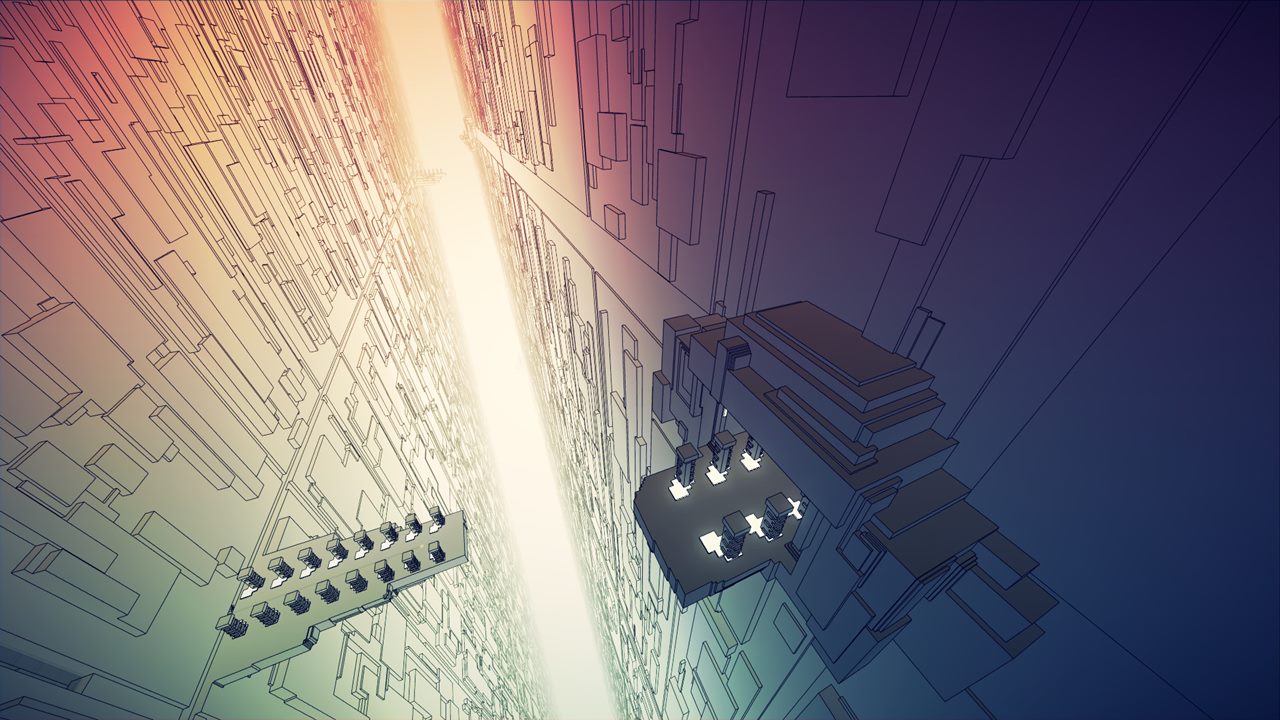
Spoiler question:
The ending was very impressive for me. That was an experience unique to Manifold Garden. What made you…what even is that?
William Chyr:
Yeah, that ending came so late in development, for a long time we didn’t have it. Manifold Garden has this theme of going through this journey and its multiple dimensions and I wanted it to feel like you transcended by the end. I wanted that feeling. We have our visual effects programmer Sam Blye, that was all him. So towards the end we basically said, okay Sam, here is where the game ends, you have this amount of time, so just do your thing. Here are some inspirations.
We were inspired by the ending of 2001: A Space Odyssey, of course, but fractals were also a big inspiration early on in the development. This is a game that has multiple dimensions, it has architectures. So I think the initial part of the sequence is heavily inspired by fractals, inspired by fractal architecture.
It’s like you’re experiencing going from 3D to 4D and now it’s 10…or infinity. And so we wanted to capture that feeling of going into infinity, going into a world of multiple dimensions, that’s completely not like what is in this world. And Sam did a great job, it was a very challenging one I think. I think he was almost intimidated, but we worked on it for about three weeks back and forth. I absolutely love what he’s done. And of course, the music from Laryssa had a big impact as well.


